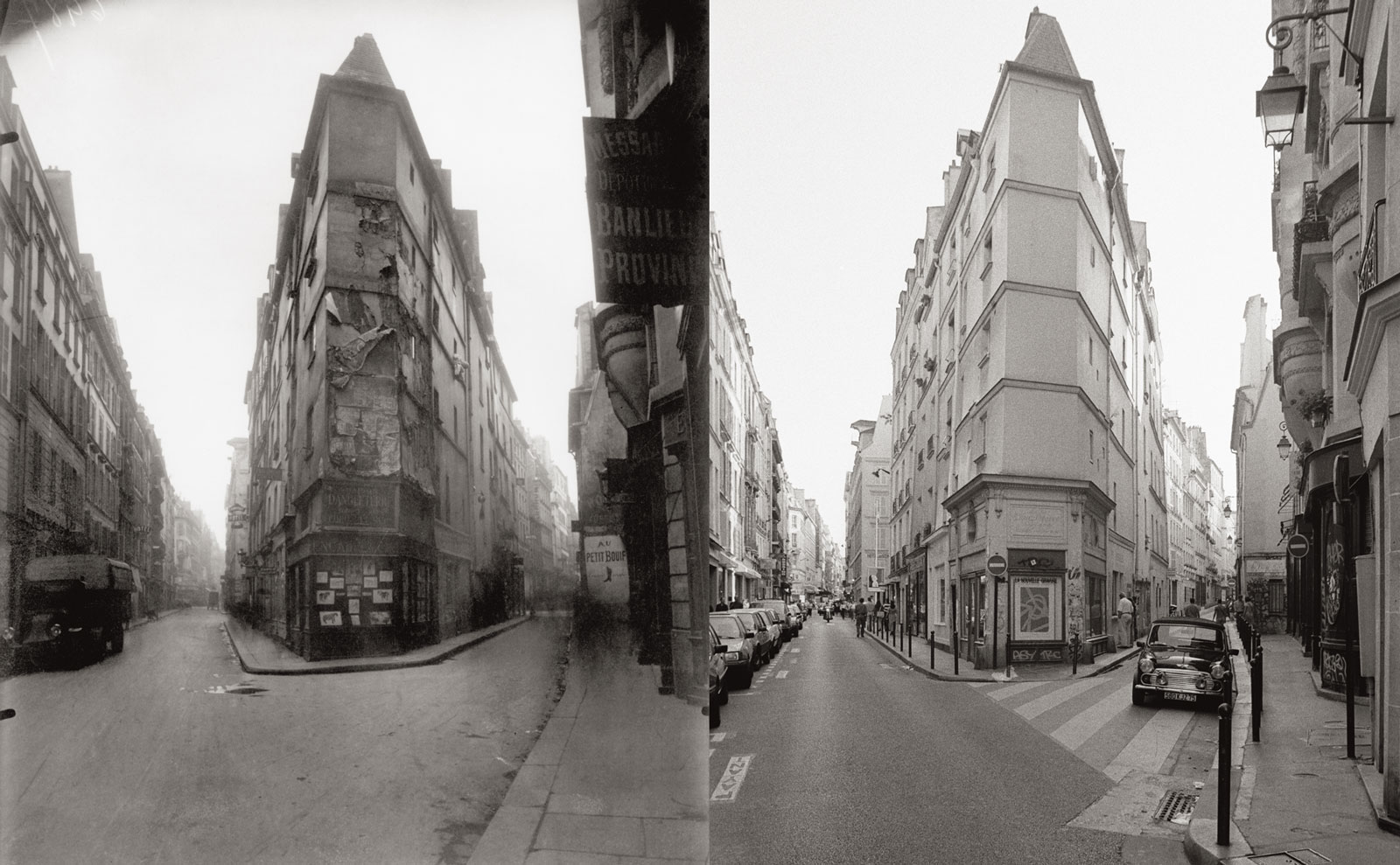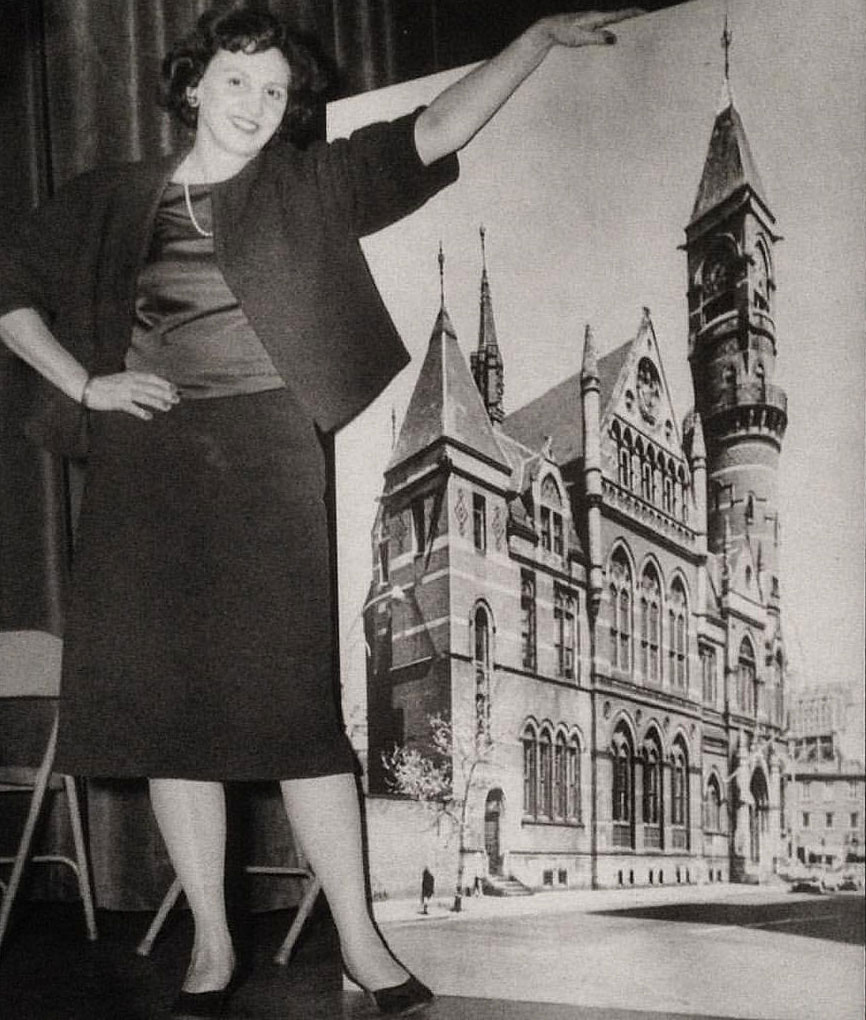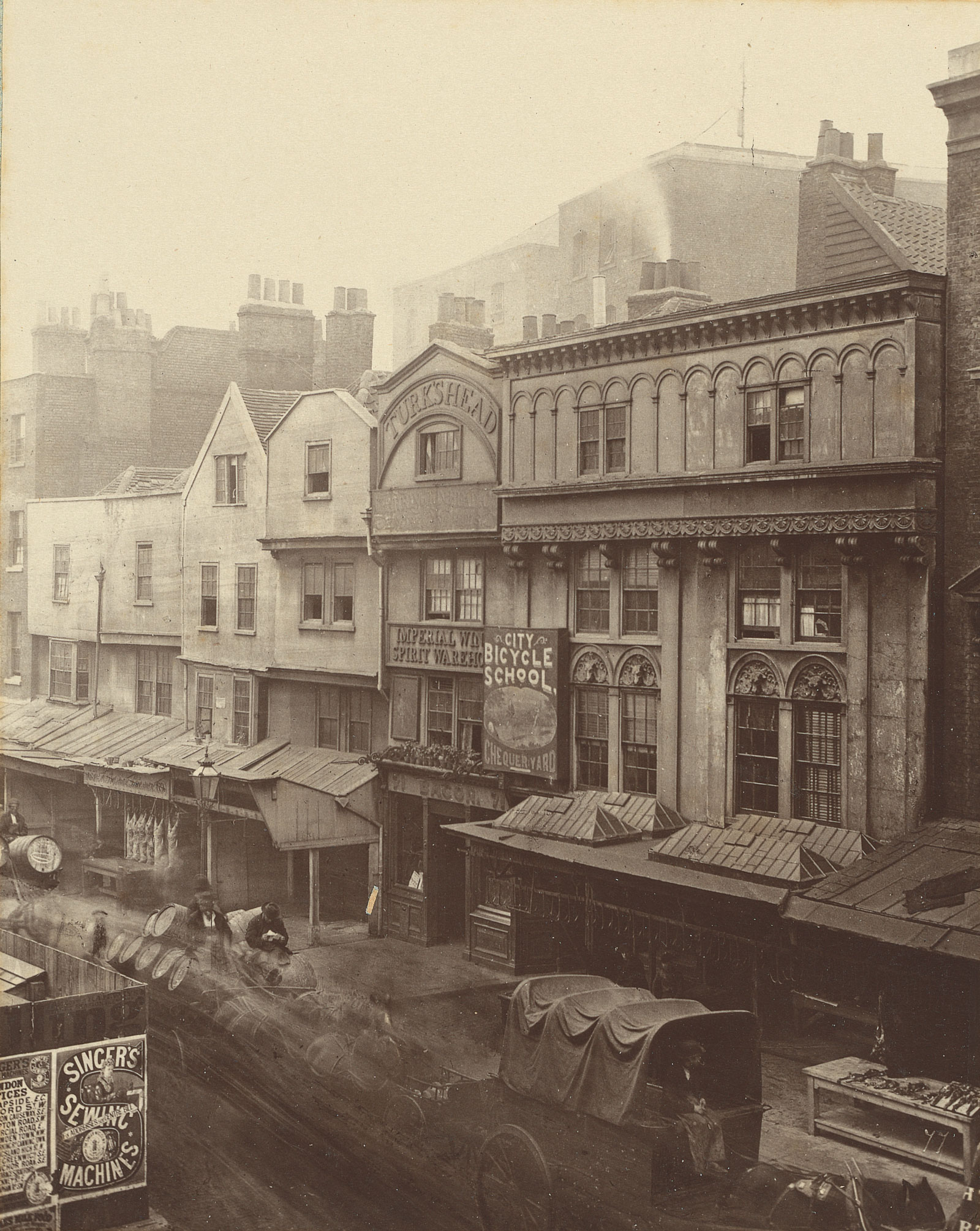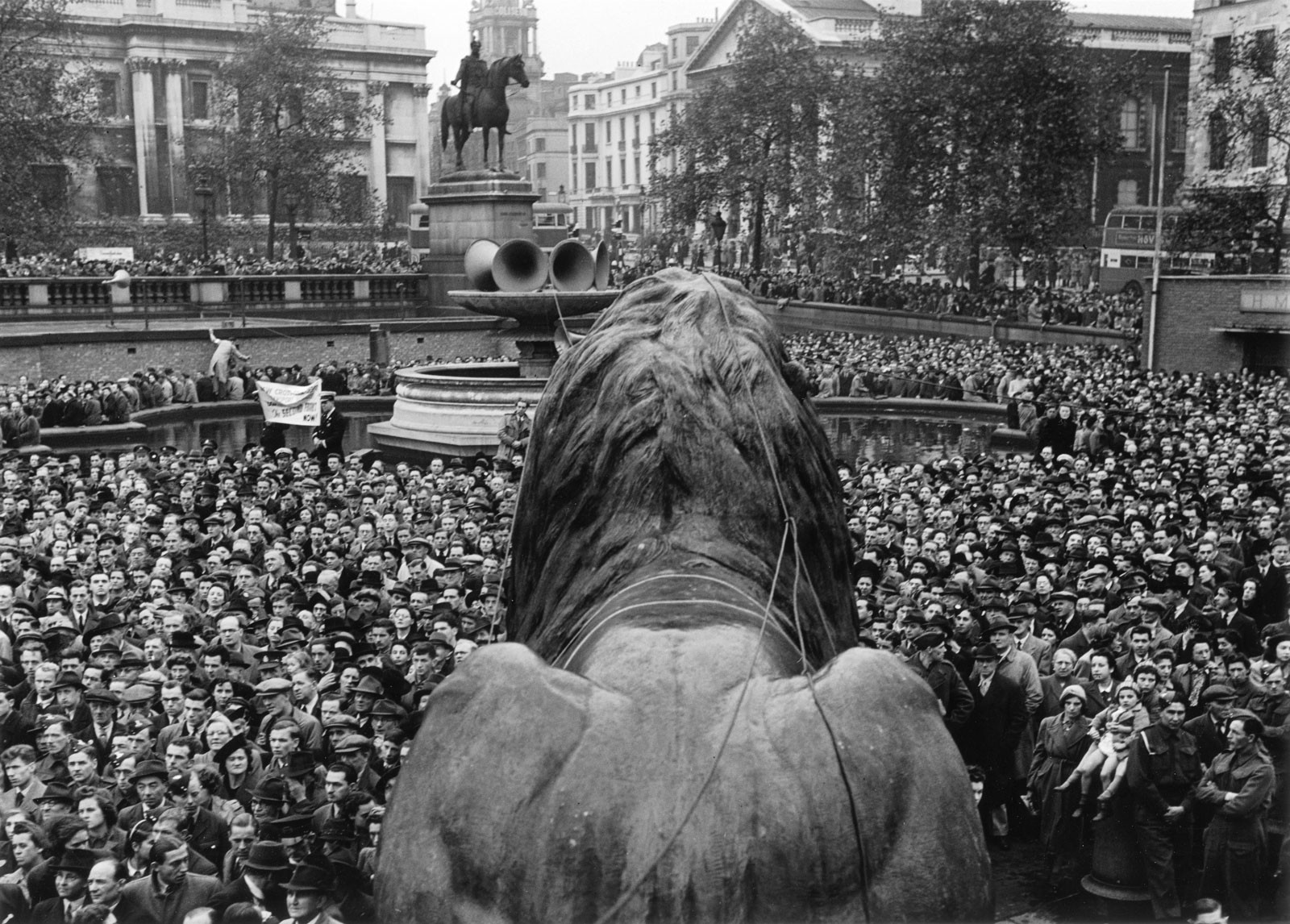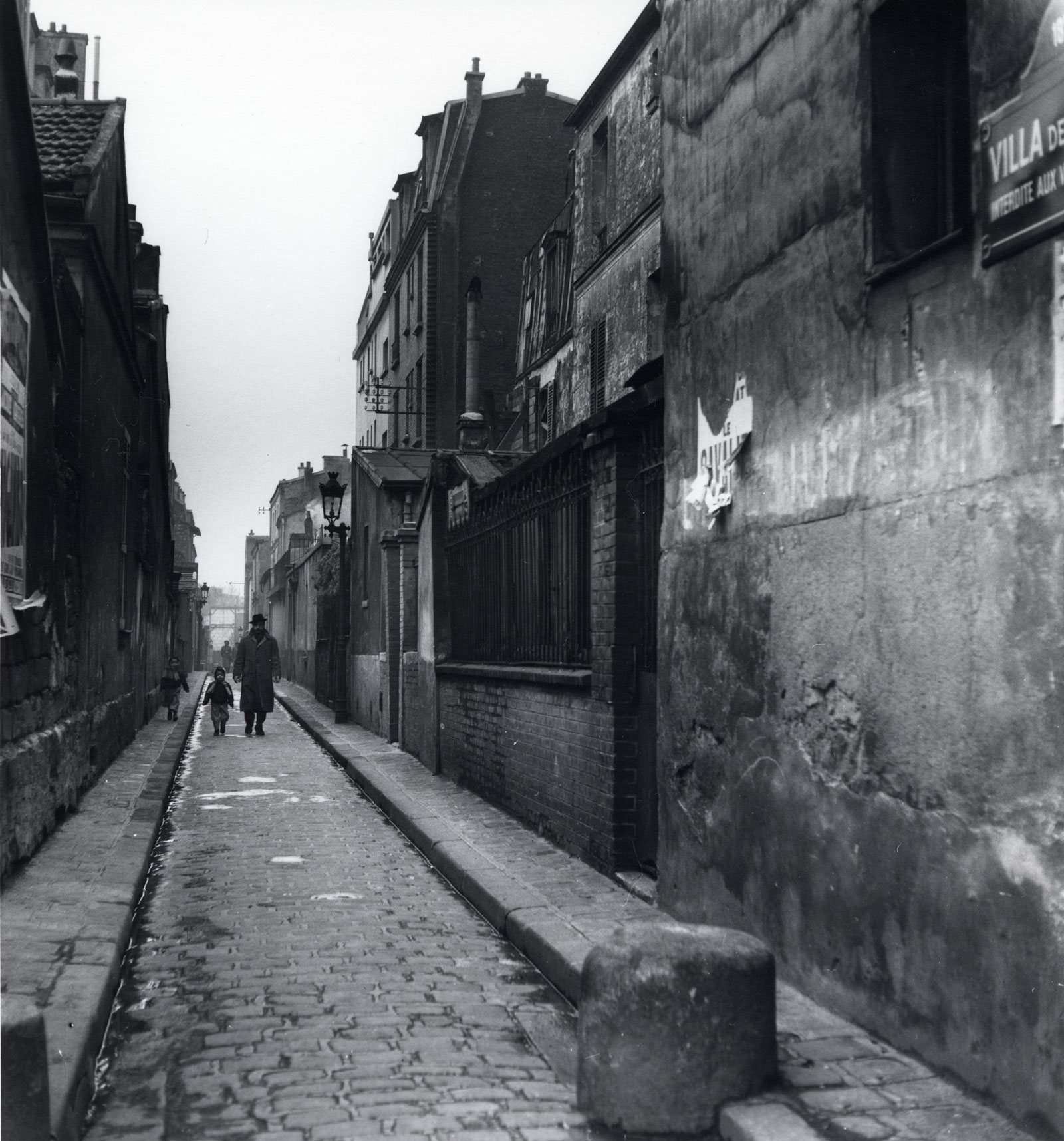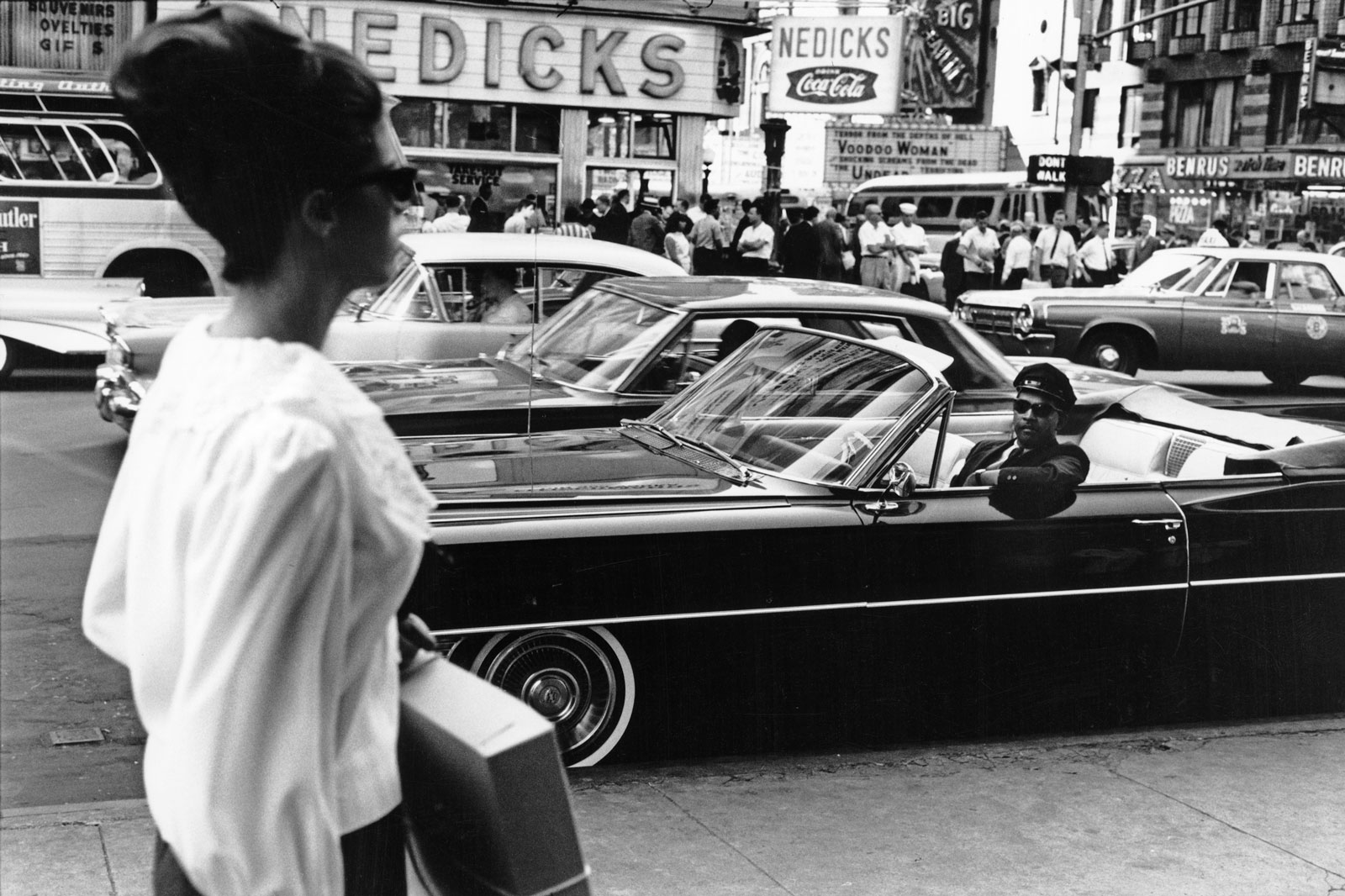Well before I read my first book on the building art—a Pelican paperback of Nikolaus Pevsner’s An Outline of European Architecture that I discovered at age fifteen—my awareness of the man-made environment was heightened through a more unlikely source: the New York Daily News Sunday magazine. It was there, beginning in 1955, that the architectural historian Margot Gayle had an illustrated column called “New York’s Changing Scene” (likely inspired by “Changing New York,” Berenice Abbott’s monumental 1935-1939 photo-documentary series for the Federal Art Project.)
Gayle’s weekly diptych juxtaposed a vintage photo of a location somewhere in the five boroughs with a current shot taken from exactly the same angle and explained in a long caption. The differences were often astonishing, and made me realize that great cities are in constant architectural flux, no matter how complete they may seem in their present form.
That then-and-now approach to urban criticism took root during the nineteenth century, more or less simultaneously with the invention of photography, as the rapid growth of European cities awakened a new concern that much of historical importance was being lost. The British architect A.W.N. Pugin’s polemic Contrasts (1836) posed engraved images of supposedly virtuous Gothic architecture against examples of allegedly decadent Neoclassicism. The vast urban development projects of the era—such as Haussmann’s radial reconfiguration of Paris and the creation of Vienna’s Ringstrasse on the foundations of that city’s medieval walls—gave further impetus to recording metropolitan architectural history.
In mid-Victorian London, the impending demolition of King’s Head Inn Yard—one of the city’s last remaining Georgian-era coach houses, vital transportation hubs before the advent of railways—galvanized antiquarians in much the same way that the dismantling of New York’s Pennsylvania Station would a century later. To combat this alarming trend, citizens in 1875 founded the Society for Photographing Relics of Old London, the subject of “Art in Focus: Relics of Old London,” a small but superb exhibition at New Haven’s Yale Center for British Art.
During its eleven-year existence, the Society recorded views of 120 London sites and published them in a handsome portfolio edition with detailed explanatory texts. Among the buildings that did not survive were a row of gabled seventeenth-century houses in the Aldgate section, razed in 1883 to make way for an extension to the world’s first subway. But such cautionary images can also remind us how much did in fact escape the wrecker’s ball.
The Yale show—which displays twenty-two prints from a complete set collected by the museum’s Anglophile founder, Paul Mellon—establishes that about half the landmarks documented by the Society still exist. Indeed, other timber-framed structures in Aldgate unscathed by the Great Fire of 1666 (wooden exteriors were banned from later construction) miraculously remained intact until they were felled not by Pecksniffian developers but by German bombers in the Blitz.
Paris was spared such aerial devastation in 1940, as evidenced by a new paperback edition of Christopher Rauschenberg’s Paris Changing: Revisiting Eugène Atget’s Paris (originally published in 2007). Shortly before the turn of the millennium, Rauschenberg (son of the celebrated Pop master Robert Rauschenberg and the artist Susan Weil) revisited many of the places in and around the French capital photographed by Atget between 1897 and 1927, and took a series of pictures to show how these sites looked nearly a century later, most virtually untouched by major change.
Although Atget saw himself as a journeyman who portrayed fin-de-siècle Paris in a just-the-facts manner, his images are so suffused with a poetic aura that his status as the supreme photographic artist of his time and place remains undisputed. Most remarkable about the seventy-six pairings—laid out with one of Atget’s characteristically straightforward and yet poignant photos on one page, opposite a highly competent if inevitably outclassed follow-up by Rauschenberg—is how few of them betray the passage of time. The greatest differences are most noticeable in park settings, where trees and hedges reveal the inexorable cycles of nature.
Rauschenberg set to work just before the post-millennial onslaught of luxury goods merchandizing, which has made Chanel, Louis Vuitton, and other designer-label boutiques in Paris seem almost as ubiquitous as Duane Reade pharmacies in Manhattan. Thus his photographs predate the creeping over-gentrification that has since befallen one formerly gritty arrondissement after another as economic underachievers are pushed further toward the Périphérique.
Advertisement
In New York, by contrast, it would be difficult to do an Atget-like project because so much has been altered or destroyed. A new website launched last year by the New York Public Library gives access to selections from the 80,000 photographic images in its Millstein Collection, which depict the city from around 1870 to 1970, and are here keyed to their locations on a map of the five boroughs. When you click on one of the red dots scattered across the city plan like measles, it links to one or more views of the surrounding area. It’s a great idea, but I found it somewhat less than user-friendly.
Streets are clearly named in the close-up version of the map as it first appears, but when you zoom out to widen the scope, identifications disappear and red dots blur together into indistinct blobs, until almost all of Manhattan and Brooklyn becomes one confusingly undifferentiated carmine mass. Unless you know the exact location of a building or enclave it’s often hard to find. However, there are many serendipitous pleasures to be savored even when you go somewhat astray in negotiating this imperfect and yet highly enjoyable resource, and one hopes that further tinkering will give it pinpoint precision in the future.
A larger question raised by images of city architecture across long periods of time is how the occupants of urban centers themselves have changed. So noble are Atget’s compositions that it’s easy to overlook their most conspicuous omission: city dwellers. For although some of his photographs include a concierge, shopkeeper, or street sweeper, for the most part the tableaux include no people. The antithesis of Atget’s eerily depopulated Paris can be found in the teeming scenes of metropolitan street life on display in “Unseen London, Paris, New York, 1930s-60s: Photographs by Wolfgang Suschitzky, Dorothy Bohm and Neil Libbert,” at London’s Ben Uri Gallery, which is dedicated to the work of Jewish artists.
The Vienna-born Suschitzky emigrated to London in 1935, a year after the fascist takeover in Austria, and because of his Socialist sympathies turned his lens to the stark contrasts between rich and poor he found in the British capital. Now 103, he lives once again in his native city. The ninety-two-year-old Bohm was sent to England by her German parents in 1939. After the war she went to Paris, where she captured a still-subdued feeling several years after the Nazi occupation. If her work does not rise to the level of that of her older contemporary Henri Cartier-Bresson, it nonetheless offers valuable insights into a particular moment in the history of that endlessly photographed city.
A comparative stripling at seventy-eight, Neil Libbert worked as a photojournalist for British and American newspapers during the 1960s, and his assignments in New York City resulted in some of the most underappreciated examples of street photography, the spontaneous approach promoted by the influential MoMA curator John Szarkowski. The examples now displayed in London make a convincing case that Libbert on occasion could hold his own with such acknowledged masters of the genre as Garry Winogrand and Robert Frank, demonstrated by Libbert’s super-cool 42nd Street (1960), which shows a black man behind the wheel of a killer Cadillac convertible as he eyes a foxy beehived chick. Where are they now? Such quintessentially human interactions offer a sobering reminder that however brief the lives of some urban buildings, those of their inhabitants are even shorter.
“Art In Focus: Relics of Old London” is at the Yale Center for British Art through August 14. “Unseen London, Paris, New York, 1930s-60s: Photographs by Wolfgang Suschitzky, Dorothy Bohm and Neil Libbert ” is at London’s Ben Uri Gallery through August 29. Christopher Rauschenberg’s Paris Changing: Revisiting Eugène Atget’s Paris is published by Princeton Architectural Press.

